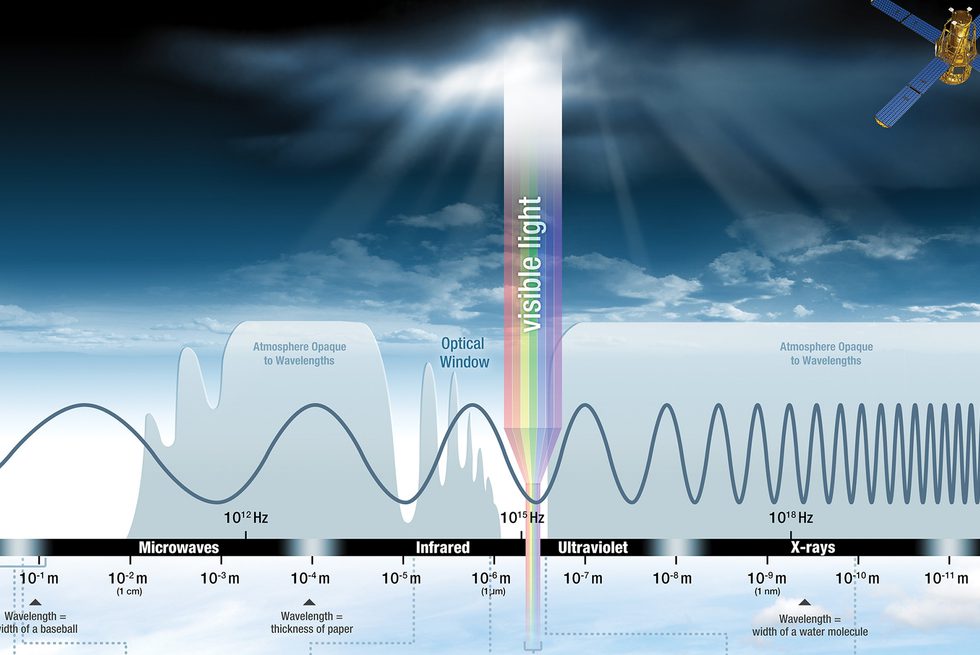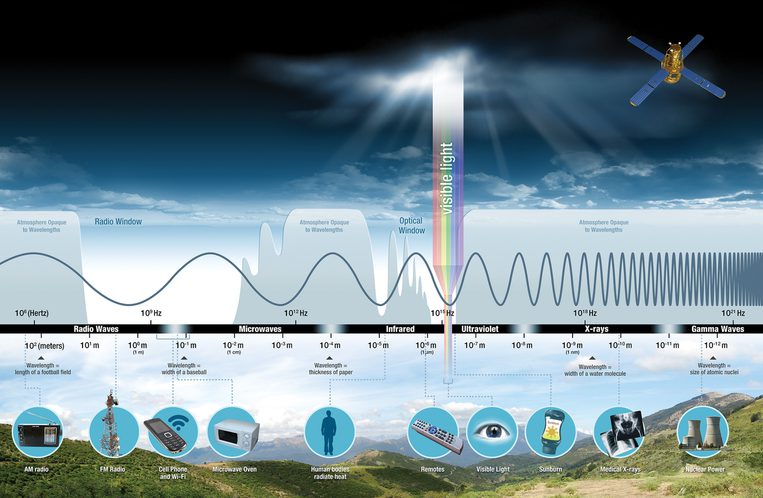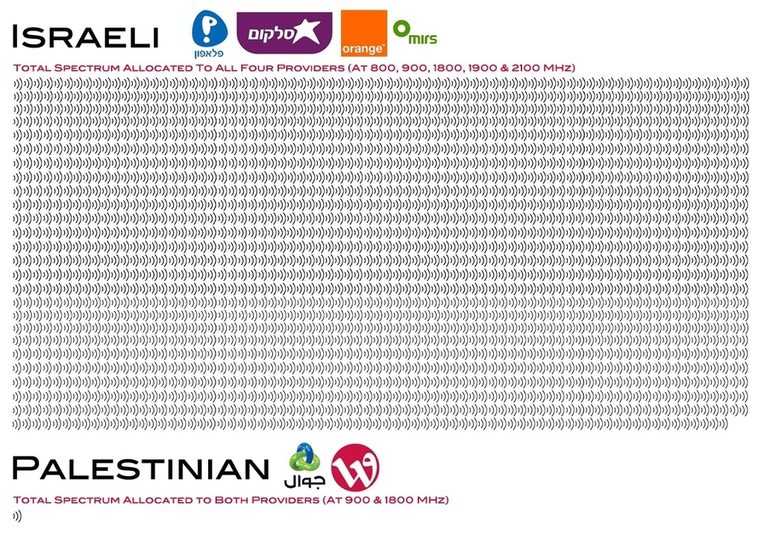Spectrum
From the Series: Speaking Volumes
From the Series: Speaking Volumes

The electromagnetic spectrum is the range of frequencies of electromagnetic radiation (that is, the energy transferred), which are categorized as radio waves, microwaves, infrared, visible light, ultraviolet, X-rays, and gamma waves.

There is no ether, however, through which signals travel, nor physical boundaries between bands. There are only signals, transmitters, and receivers, which are natural (the sun generates ultraviolet rays) or man-made (a nuclear plant generates gamma waves). This points to two immediate problems. First, spectrum is not infrastructure, strictly speaking. Unlike sewage, roads, server farms, or railways, the electromagnetic spectrum naturally exists and neither is built on past innovations nor will change with future ones. Second, it is invisible, although the spectrum includes all visible light. That a device operates at 100 kilohertz or that a natural phenomenon generates X-rays are not things we can see. More accurately, then, the spectrum is a relational backbone to the devices and networks we build, from microwave ovens and X-ray machines to nuclear power plants and cellular telephone networks.
It is in the political work of using metaphors to explain it, in other words, that spectrum becomes infrastructural. This work becomes particularly visible in approaching spectrum as a territory.
What land was to the agricultural age, one analogy goes, the electromagnetic spectrum is to the information age. We describe spectrum territorially: frequency is equivalent to geography; signals traverse space; radios are agents operating in a terrain. Conceived as such, spectrum is managed as if it had boundaries. From there, it is an easy conceptual jump to treat spectrum as real estate with carrying capacities, fallow bands, easements, and tracts. As real estate, spectrum becomes a resource: we refer to its use, its value as a public good or private resource. We speak of its availability or scarcity, and we are concerned about its efficient use. The political consequences of these rhetorical moves are significant. Consider the following examples.
In the United States, spectrum is enclosed and regulated by such an ideology of real estate. The Federal Communications Commission (FCC) awards public airwaves to the highest bidders, turning spectrum into an exchange value through the artificial creation of scarcity. The FCC and the communications industry wax lyrical about a spectrum crisis, especially with respect to growing wireless use (between 3kHz and 300GHz). To be sure, such use is expanding: mobile data traffic is predicted to grow at a compound annual rate of 47 percent between 2016 and 2021, with 11.5 billion devices in use by then. The concern is that growth will lead to overpopulation, devices will interfere with each other, and we will run out of spectrum. The proposed solution is to further liberalize the market and ensure that corporations continue to pay billions of dollars to exclusively rent specific bands. This approach produces spectrum as a nonrenewable and excludable resource, which, like land, becomes a commercial input to be managed by price mechanisms. But spectrum scarcity is a result of the rent- and profit-seeking architecture of a network economy that seeks returns for the owners and renters of bands, not from constraints of the airwaves themselves. Nothing demonstrates the fallacy of scarcity and interference more than Wi-Fi. Relying on segments of the unlicensed spectrum, frequencies around 2.4GHz are historically considered “garbage bands.” Despite the predicted demand for these frequencies, we are not going to deplete them because Wi-Fi devices are built to run simultaneously and share spectrum, “smart” enough to switch to another transmitter when they lose signal. Wi-Fi thus demonstrates the workings of an open spectrum and the triumph—not tragedy—of the commons.
On the other side of the world, the Israeli Ministry of Communications administers spectrum use across Israel and the Palestinian Territories, demonstrating a different set of political outcomes from treating spectrum as territory. When Palestinians were first permitted to build their own communications infrastructure in 1993, the ministry allocated the Palestinian cellular telephone provider, Jawwal, 4.8MHz of bandwidth at 900MHz, enough for 120,000 subscribers based on the technologies of the time. (In 2008 the ministry licensed 3.8MHz to a second Palestinian provider for use in the West Bank.) Jawwal’s allocation has not changed since 1993, although political agreements at the time assured otherwise. Today, more than three million users cope with a twenty-five-year old platform meant for 120,000: signals are weak and do not extend far; calls are constantly dropped or do not go through; the network can only operate at 1.5GHz, making new technologies like GPS, online banking, or Wi-Fi impossible to use.
Meanwhile, the ministry allocates two thousand times more spectrum to the four Israeli providers despite only having three times as many subscribers; together, the four companies provide stronger and further-reaching signals, as well as the ability to handle millions of simultaneous calls along with every latest technology. This is not a question of inequality, but of territoriality. While Palestinian signals are bound by spectrum limitation, Israeli providers beam signals to and from settlements, outposts, bypass roads, military installations, military-defined buffer zones, and along the wall in and around the Territories. Thus, in the depths of the West Bank and the Gaza Strip, there are few or no Palestinian signals, but plenty of Israeli signals which Palestinians are not permitted to use (see Tawil-Souri 2015). Spectrum here functions as real estate, a means of capital accumulation, and a territorially uneven bordering mechanism.

Yet, I want to insist, spectrum is not land. Scarcity, interference, and enclosure are not immutable properties of spectrum. They are historically contingent judgments manifested in technical and juridical systems that treat spectrum as a territorial asset. From a set of analogies that normalize certain relationships to the systems of allocation that produce real boundaries, we have transformed spectrum into the information age’s most political and politicized dimension.
Tawil-Souri, Helga. 2015. “Cellular Borders: Dis/Connecting Phone Calls in Israel-Palestine.” In Signal Traffic: Critical Studies of Media Infrastructures, edited by Lisa Parks and Nicole Starosielski, 157–80. Urbana: University of Illinois Press.